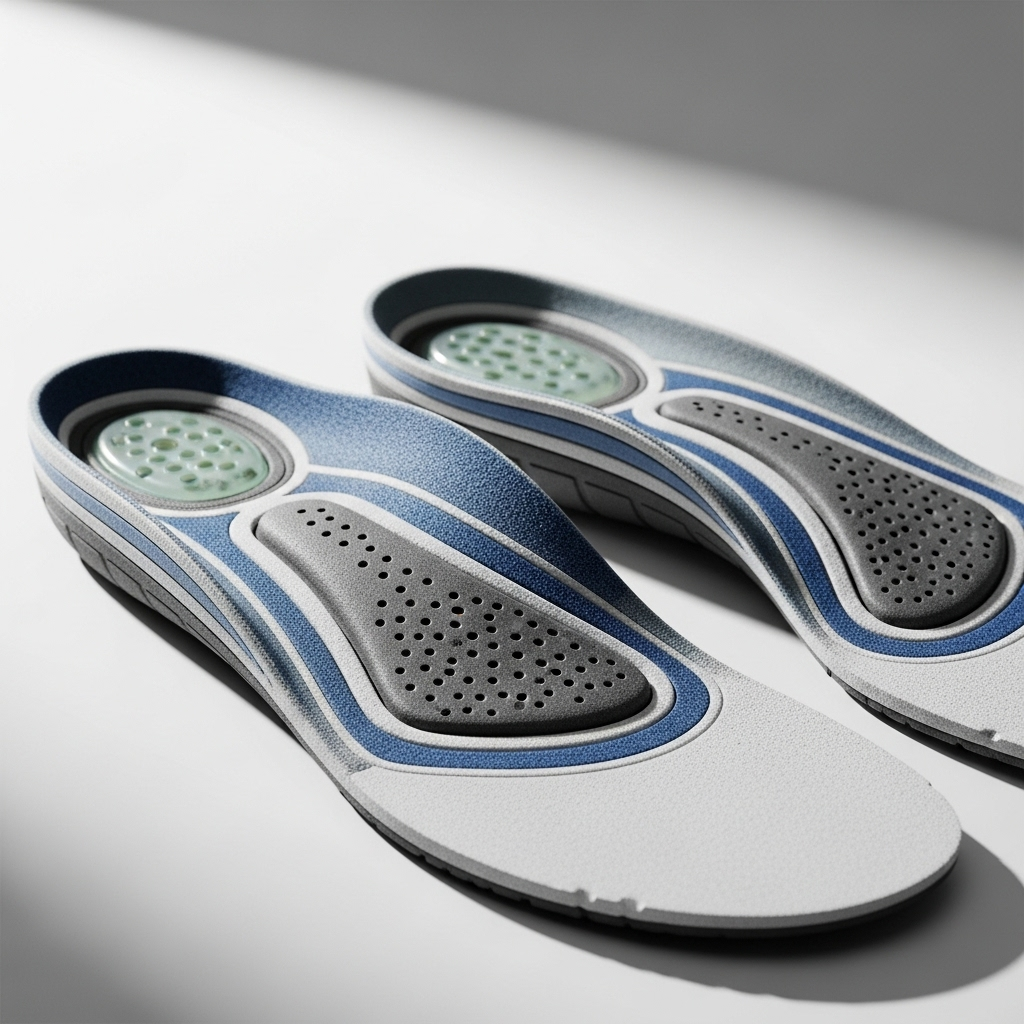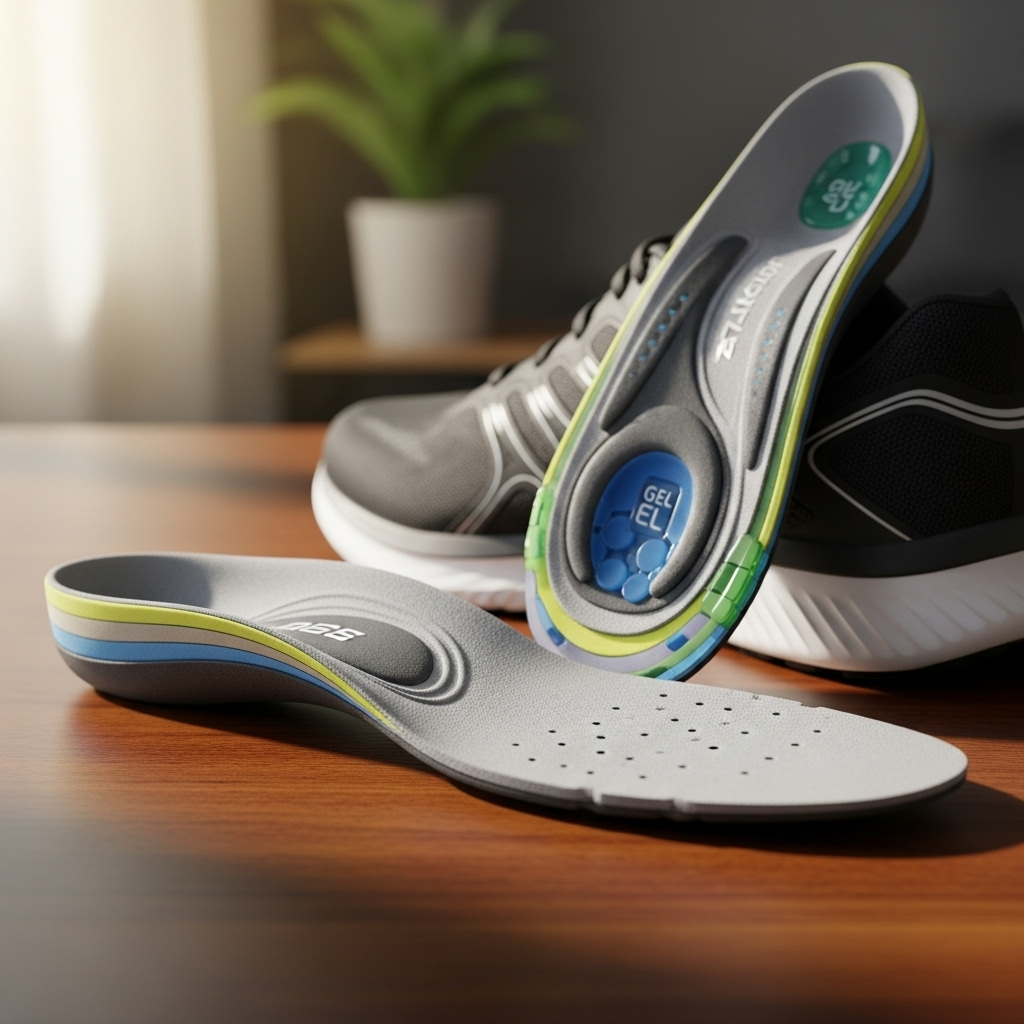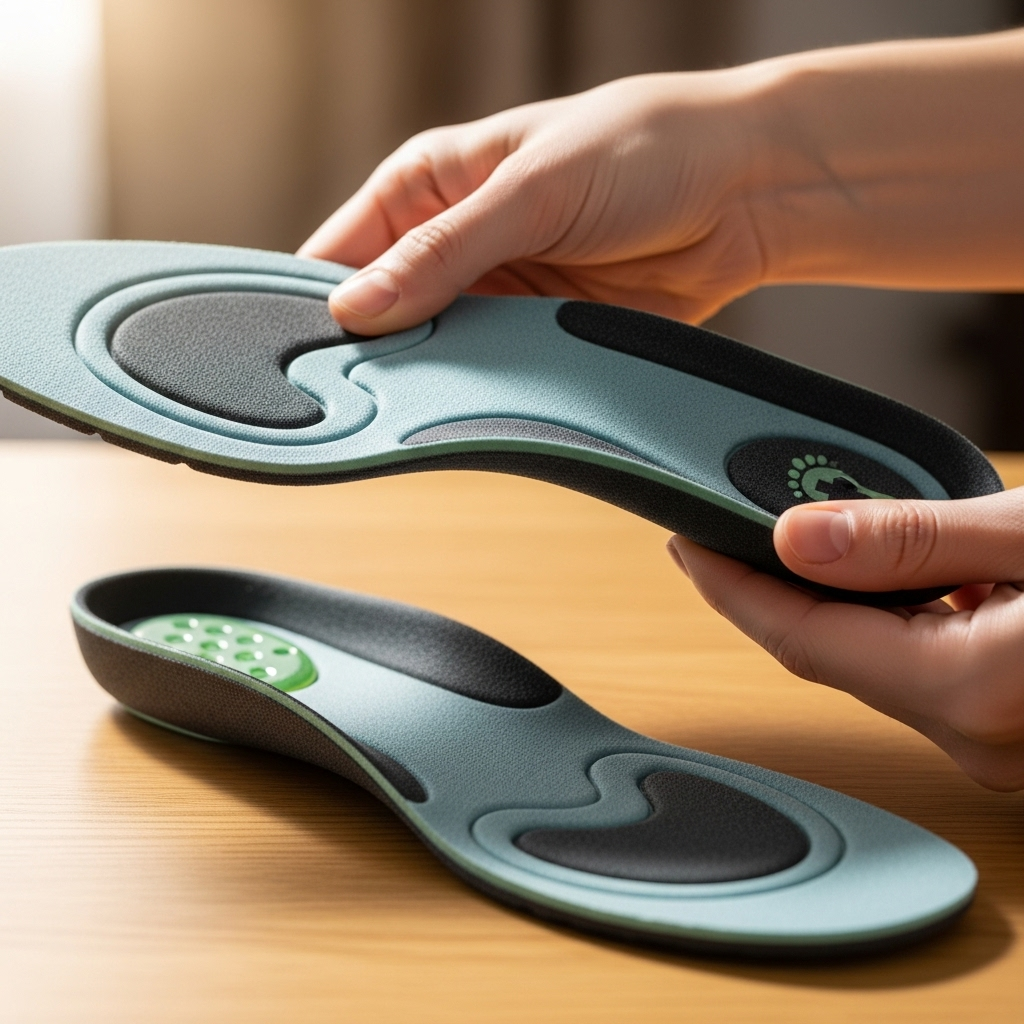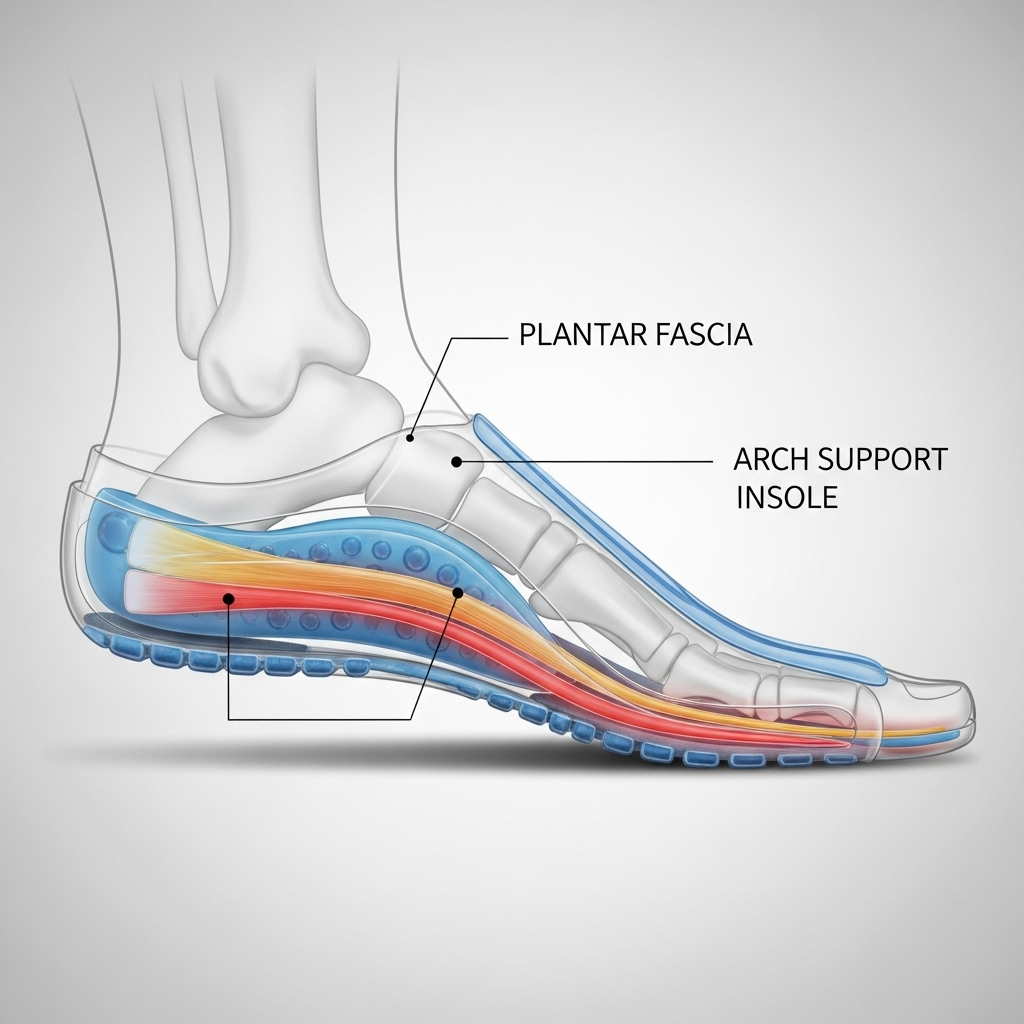Can an insole effectively relieve plantar fasciitis foot pain? Yes, specific foot pain relief insoles designed for plantar fasciitis offer targeted support and cushioning to significantly reduce heel pain, support the arch, and promote healing, acting as an essential cure for many sufferers.
Hello there! Are you tired of that sharp, persistent pain in your heel, especially when you first step out of bed or after a long day? That’s likely plantar fasciitis, a common but often frustrating issue. It’s like your foot’s natural shock absorber is protesting! But don’t worry, you’re not alone, and there are effective ways to find relief. This guide is here to demystify a powerful tool in your arsenal: specialized insoles. We’ll walk through how they can help, what to look for, and how to use them to get you back on your feet, pain-free. Ready to say goodbye to that heel pain?
Understanding Plantar Fasciitis: The Root of the Pain
Before we dive into insoles, let’s quickly understand what’s happening. Plantar fasciitis is an inflammation of the plantar fascia, which is a thick band of tissue running across the bottom of your foot, connecting your heel bone to your toes. Think of it like a sturdy rubber band that supports your arch. When this band gets strained or irritated, it can cause intense pain, especially in the heel.
What causes this strain? Several things can contribute:
- Overuse: Too much standing, walking, or running, especially on hard surfaces.
- Improper Footwear: Shoes that lack support or cushioning.
- Weight Gain: Extra pounds put more pressure on your feet.
- Foot Structure: High arches or flat feet can affect how your weight is distributed.
- Tight Muscles: Stiff calf muscles or tight Achilles tendons can also play a role.
The good news is that plantar fasciitis is very treatable, and insoles are a key part of that treatment for many!
Why Insoles are an Essential Cure for Plantar Fasciitis

When your plantar fascia is stressed, it needs support and a bit of help to recover. This is where specialized insoles shine. They’re not just cushions; they’re designed to:
- Support the Arch: This takes pressure off the plantar fascia band, allowing it to rest and heal.
- Cushion the Heel: They provide extra padding where impact is greatest.
- Improve Foot Alignment: Proper alignment reduces strain on the entire foot structure.
- Absorb Shock: They act as a secondary shock absorber, softening the blow of each step.
Wearing the right insoles can make a noticeable difference in your daily comfort and help prevent the condition from worsening.
Choosing the Right Foot Pain Relief Insole for Plantar Fasciitis
Not all insoles are created equal, especially when it comes to plantar fasciitis. Here’s what you should look for to make sure you’re getting the best support:
Key Features of Plantar Fasciitis Insoles
When shopping for insoles, keep an eye out for these crucial elements:
- Firm Arch Support: This is non-negotiable. The insole should have a noticeable, rigid or semi-rigid support that matches your arch height.
- Deep Heel Cup: A deep, contoured heel cup helps cradle your heel, providing stability and reducing shock.
- Adequate Cushioning: While firmness is key for support, a good amount of cushioning, especially in the heel area, is vital for comfort.
- Shock Absorption Material: Look for materials like EVA (ethylene-vinyl acetate), gel, or polyurethane, known for their shock-absorbing qualities.
- Orthoheel Technology (or similar): Some insoles are designed with built-in orthotic features that help control pronation (the inward rolling of the foot) and promote better alignment.
- Material and Durability: High-quality materials will last longer and provide consistent support.
Types of Insoles for Further Consideration
Beyond the general features, different types of insoles cater to specific needs or preferences:
| Insole Type | Best For | Key Benefits |
|---|---|---|
| Orthotic Arch Support Insoles | Moderate to severe plantar fasciitis, fallen arches. | Rigid support, excellent arch contouring, heel stabilization. |
| Cushioned Heel Inserts | Mild plantar fasciitis, those prioritizing comfort. | Extra heel padding, good shock absorption, often more flexible. |
| Full-Length Orthotic Inserts | Comprehensive foot support, athletes, active individuals. | Support the entire foot, correct alignment, reduce fatigue. |
| Activity-Specific Insoles | Runners, walkers, people on their feet all day. | Designed for high-impact activities, enhanced shock absorption and stability in motion. |
Consider your daily activities and the severity of your pain when making a choice. A good starting point for many with plantar fasciitis is a firm, orthotic arch support insole with a deep heel cup.
How to Use Your Insoles for Maximum Relief: A Step-by-Step Guide

Simply buying the right insoles isn’t enough; you need to use them correctly to get the most benefit. Here’s how to ease into them:
Step 1: Assess Your Current Footwear
Before inserting new insoles, check your shoes. Do they have removable insoles? Are they worn out? Insoles are best used in shoes that offer a good foundation – meaning they have decent structural support themselves. Shoes with flat, worn-out soles might not be the best candidates, as they won’t provide the necessary base for the insole.
Step 2: Prepare Your Shoes
Remove the original insoles from your shoes if they are present and easily removable. This creates space for your new plantar fasciitis insoles and ensures a better fit.
Step 3: Insert the New Insoles
Slide the new insoles into your shoes, ensuring they sit flat and snug against the bottom of the shoe. Make sure the heel of the insole aligns with the heel of the shoe.
Step 4: Break Them In Gradually
This is crucial! Your feet may not be used to the new support. Start by wearing the insoles for a short period each day, perhaps for an hour or two. Gradually increase the duration over a week or two. This allows your feet and the insoles to adjust together, preventing discomfort or soreness.
Example Break-In Schedule:
- Day 1-3: Wear for 1-2 hours per day.
- Day 4-7: Wear for 3-4 hours per day.
- Week 2 onwards: Wear for most of the day, as comfortably tolerated.
Listen to your body. If you experience increased pain, reduce the wear time and try again later. You might also find it helpful to alternate shoes during the break-in period.
Step 5: Wear Them Regularly
For effective relief, consistency is key. Wear your insoles in your most-worn shoes throughout the day, especially during activities that typically trigger your pain, like walking, standing, or exercising.
Step 6: Monitor Your Progress
Pay attention to how your feet feel. Are you experiencing less pain? Can you stand or walk for longer periods? The insoles should contribute to a noticeable reduction in discomfort over time.
Beyond Insoles: Complementary Treatments for Plantar Fasciitis
While insoles are a powerful tool, they work best as part of a broader treatment plan. Incorporating other strategies can significantly speed up your recovery and provide more comprehensive relief.
Stretching Exercises
Regular stretching can loosen the plantar fascia and calf muscles. Here are a few effective ones:
- Calf Stretch: Stand facing a wall, place your hands on the wall, and step one foot back, keeping the back leg straight and heel on the floor. Lean forward until you feel a stretch in your calf. Hold for 30 seconds, then switch legs.
- Plantar Fascia Stretch: While sitting, cross one leg over your other knee. Grasp your toes and gently pull them back towards your shin until you feel a stretch along the bottom of your foot. Hold for 30 seconds, then switch feet.
- Towel Stretch: Sit on the floor with your legs extended. Loop a towel around the ball of your foot and gently pull back, keeping your knee straight. Hold for 30 seconds, then switch.
Performing these stretches several times a day, especially before and after activity, can be very beneficial. For professional guidance on foot stretches and exercises, the American Podiatric Medical Association offers excellent resources: American Podiatric Medical Association (APMA) Patient Resources.
Rest and Activity Modification
Sometimes, the best thing you can do is give your feet a break. If certain activities aggravate your pain, try to reduce or modify them. High-impact activities like running might need to be temporarily replaced with lower-impact options like swimming or cycling.
Proper Footwear (Outside of Insoles)
This is almost as important as the insoles themselves. Look for shoes that offer:
- Good Arch Support: The shoe’s natural arch should complement your insole.
- Cushioned Soles: Especially important for shock absorption.
- Firm Heel Counter: The back of the shoe should be stiff to stabilize your heel.
- Slight Heel Drop: A small elevation at the heel can sometimes relieve pressure on the plantar fascia, though this varies by individual.
For more information on choosing the right shoes, consider resources from organizations like the American Orthopaedic Foot & Ankle Society (AOFAS Foot & Ankle Health).
Other Potential Treatments
Depending on your situation, your doctor might also recommend:
- Night Splints: To keep your foot in a stretched position overnight.
- Physical Therapy: A therapist can guide you through specialized exercises and stretches.
- Orthotics: Custom-made devices if over-the-counter insoles aren’t sufficient.
- Medications: Over-the-counter pain relievers like ibuprofen can help reduce inflammation.
- Injections: In some persistent cases, corticosteroid injections might be considered.
It’s always a good idea to consult with a healthcare professional, such as a podiatrist or physical therapist, to get a proper diagnosis and a personalized treatment plan.
When to Seek Professional Help

While insoles and home care can resolve most cases of plantar fasciitis, there are times when it’s essential to see a doctor:
- If the pain is severe and doesn’t improve with self-care after a few weeks.
- If you experience numbness or tingling in your foot.
- If you have diabetes or other conditions that affect foot health.
- If you notice swelling or redness that is concerning.
- If your daily activities are significantly impacted and you can’t find relief.
A podiatrist can properly diagnose your condition, rule out other foot problems, and recommend the most effective treatment strategy, which may include specific recommendations for insoles or other interventions.
Frequently Asked Questions About Plantar Fasciitis Insoles
Q1: How long does it take for plantar fasciitis insoles to work?
A1: You might feel some relief almost immediately due to better support. However, significant improvement usually takes several weeks of consistent use, as the inflammation reduces and your foot adapts.
Q2: Can I wear plantar fasciitis insoles all day?
A2: Once you’ve completed the break-in period, yes. For best results, wear them consistently in your most-worn shoes throughout the day. If you experience discomfort, take a break and gradually reintroduce them.
Q3: Do plantar fasciitis insoles fit in any shoe?
A3: They fit best in shoes that have a removable insole and a decent amount of internal space. They might not fit well in very narrow or tight-fitting shoes, like dress shoes or some ballet flats.
Q4: How often should I replace my plantar fasciitis insoles?
A4: Most insoles should be replaced every 6 to 12 months, depending on the material, how often you wear them, and your activity level. If you notice they’re no longer providing adequate support or cushioning, it’s time for a new pair.
Q5: Are custom orthotics better than over-the-counter insoles for plantar fasciitis?
A5: Custom orthotics are molded specifically to your feet and can offer precise support, which may be beneficial for complex foot conditions or severe plantar fasciitis. However, high-quality over-the-counter insoles can be very effective and are a more affordable starting point for many people.
Q6: Can I use these insoles for other foot pain?
A6: While designed for plantar fasciitis, the arch support and cushioning offered by these insoles can often help with other types of foot pain, such as general heel pain, arch pain, or even some types of metatarsalgia, by improving foot mechanics and reducing pressure.
Conclusion: Step Confidently Towards Pain-Free Feet

Plantar fasciitis foot pain doesn’t have to be a constant companion. By understanding the condition and utilizing the right tools, like specialized foot pain relief insoles for plantar fasciitis, you can take significant steps towards healing and comfort. Remember, it’s about finding insoles that offer firm arch support, a deep heel cup, and adequate cushioning, and then integrating them gradually into your daily routine.
Don’t forget to complement your insoles with regular stretching, proper footwear, and lifestyle adjustments. Consistency is your best friend on this journey. While these insoles are a powerful part of the solution, always listen to your body and consult a healthcare professional if your pain persists or worsens. With the right approach, you can look forward to walking, standing, and living with less pain and more comfort. Here’s to putting your best (and happiest) foot forward!
